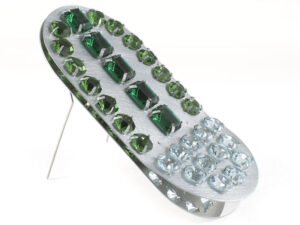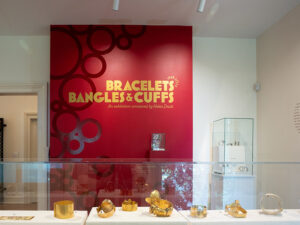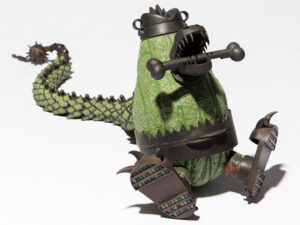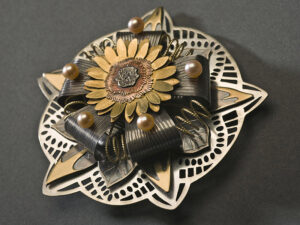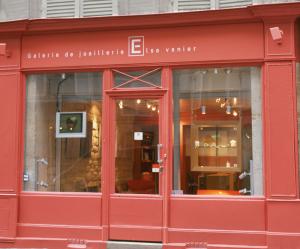
Susan Cummins: Elsa, why did you call the show The Four Seasons of Gold?
Elsa Vanier: From green to reddish, red and white, Niessing masters all the luxurious hues of gold. They do their utmost to offer most pieces in the four main colors, especially bands. They also search constantly for new ‘effects’ and recently invented aura, a 750 gold that ‘goes’ from red to white (see, for example, the Aura rings). For me green is a landscape at spring, yellow is summer, red autumn and white or grey winter . . . thus the name.
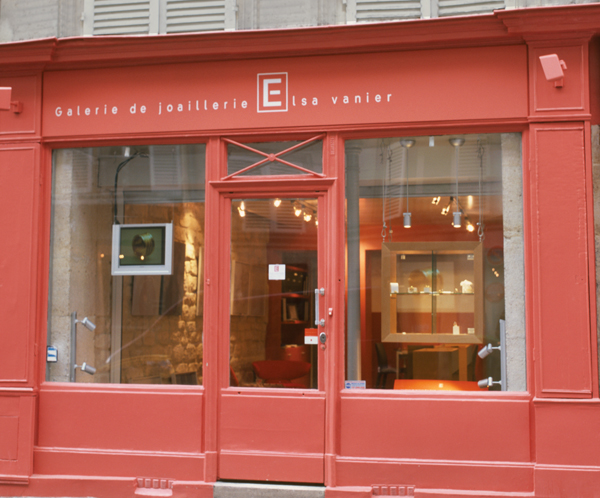
Susan Cummins: Elsa, why did you call the show The Four Seasons of Gold?
Elsa Vanier: From green to reddish, red and white, Niessing masters all the luxurious hues of gold. They do their utmost to offer most pieces in the four main colors, especially bands. They also search constantly for new ‘effects’ and recently invented aura, a 750 gold that ‘goes’ from red to white (see, for example, the Aura rings). For me green is a landscape at spring, yellow is summer, red autumn and white or grey winter . . . thus the name.

Timo Kuechler: For the past 20 years, I have headed the design department of the Niessing Jewelry Manufactory and I am responsible for the corporate design management. After studying jewelry design at the University Hochschule für Gestaltung Schwäbisch Gmünd, I started my career as a product designer for the companies Roden-stock, HEWI, Wilkhahn and Performa. In addition, I held lectureships in Geneva, Pforzheim, Braunschweig, Berlin and Schwäbisch Gmünd. I was very pleased when Niessing asked me to work for the jewelry manufactory. To me, Niessing always has been and remains ‘the’ company for jewelry where a clear and reduced design and the highest possible degree of emotion are joined to perfection. This is exactly the environment I want to create jewelry in.
Can you describe what you do?
My responsibilities as head designer at the Niessing Manufactory cover various tasks and topics:
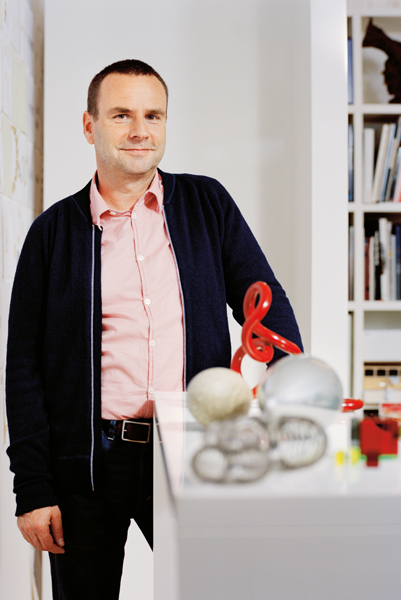 Supervision of the design team
Supervision of the design team- Maintenance of the existing collection
- Creating new designs
- Supervising the implementation of new processes and designs in the workshops
- Coordination with management and marketing
- Communication management internally and externally for our design and philosophy
- Representing the company and giving presentations
- Customer care for special clients, for instance in Japan.
- Responsibility for quotations from freelance designers
- Development and implementation of new techniques
- Strategic product management and marketing.
Can you describe the structure of the company?
Niessing has just the right size for a manufacturer of jewelry. The manufactory is big enough for production, marketing, sales and design to be organized in independent departments. On the other hand, all divisions are close enough for every individual employee to be aware of and understand the company as a whole. Apart from watch movements, we manufacture and process all products and components here in Vreden – and only in Vreden. Our staff turnover is very low, so we have been able to preserve the skills, knowledge and experience of 130 years and pass them on to the generations to come. The many years that I have worked for Niessing have resulted in a love of the products, the company and the materials we use.
How long has Niessing been in existence? What is its history?
Since 1873, Niessing in Vreden has been manufacturing wedding rings and since 1974 other jewelry as well. The Niessing brand stands for high-quality contemporary design, committed both to classic design and to experimental expression. The Niessing employees have abundant experience when it comes to handling precious metals. A great number of design awards testify to the creativity and craftsmanship inherent in Niessing jewelry. The Niessing Ring® has acquired a particularly outstanding significance. The Vreden-based artist Walter Wittek created it in 1979. It has been on the market since 1981 and recognized as a piece of art and protected by copyright since 2001. Today, the Niessing Ring® is included in the collections of notable museums.
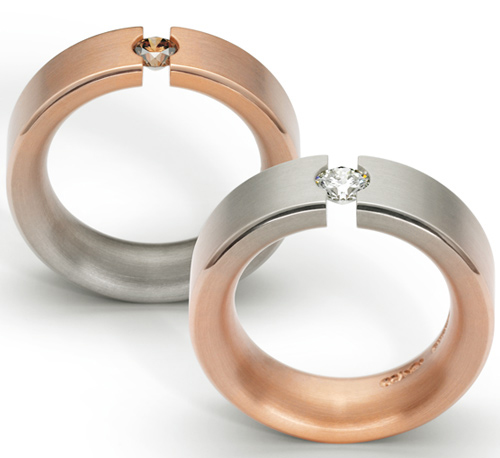
How would you describe the Niessing style? How does Niessing fit into the market place?
Niessing jewelry has a clear design and philosophy. It is both reduced in form and highly emotional in expression. We place the highest demands on perfection in craftsmanship. People are different: Many people are like Niessing in that they love clarity and a certain order, but deep inside they are very sensitive and highly emotional. People who like to describe with words what they feel. Intellect and emotion are equally important to them.
Niessing is neither able nor willing to design jewelry for everybody. We focus.
According to Elsa Vanier you often make things in four colors of gold, thus the title of her show The Four Seasons of Gold. How do you vary the color of the gold? Why does the company create such variety? Which color is the most popular?
Imagine a compass. Just like the four cardinal directions, there are also four cardinal colors – magenta, yellow, green, and cyan. For gold, these are yellow gold, red gold, gray gold and green gold. Many years of experience have shown us that different types of personalities are drawn to the different colors of gold. On the one hand, this is due to each person‘s special characteristics; on the other hand, this is certainly also based on individual skin or hair color. The gold tone influences the type of the person and the person influences the gold tone. Discoveries such as these are beautiful moments to me. There is no good or bad, neither when it comes to people, nor when it comes to colors of gold.

